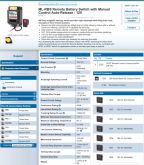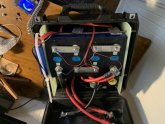I'm wondering if anyone here has had personal experience with this combination. The 7713 consumes a mere 13mA when on, which is great. It also appears to have the correct outputs to operate this relay. However, I can't use the Cargery BMS with it if this BMS can't drive the relay.
Chargery indicates that max 2.5A is available on the Charge/Discharge relay circuit. BlueSea indicates this relay requires <7A to change state. It's not clear how much less than 7A will actually work, or work reliably.
Anyone have experience with these two?
Cheers,
Doug

Chargery indicates that max 2.5A is available on the Charge/Discharge relay circuit. BlueSea indicates this relay requires <7A to change state. It's not clear how much less than 7A will actually work, or work reliably.
Anyone have experience with these two?
Cheers,
Doug





